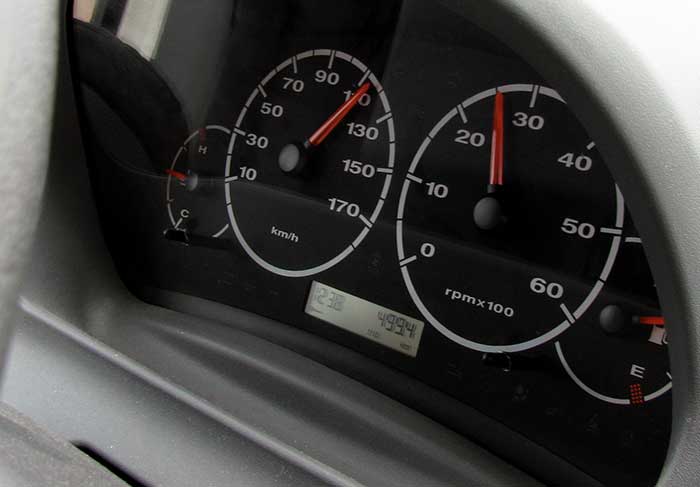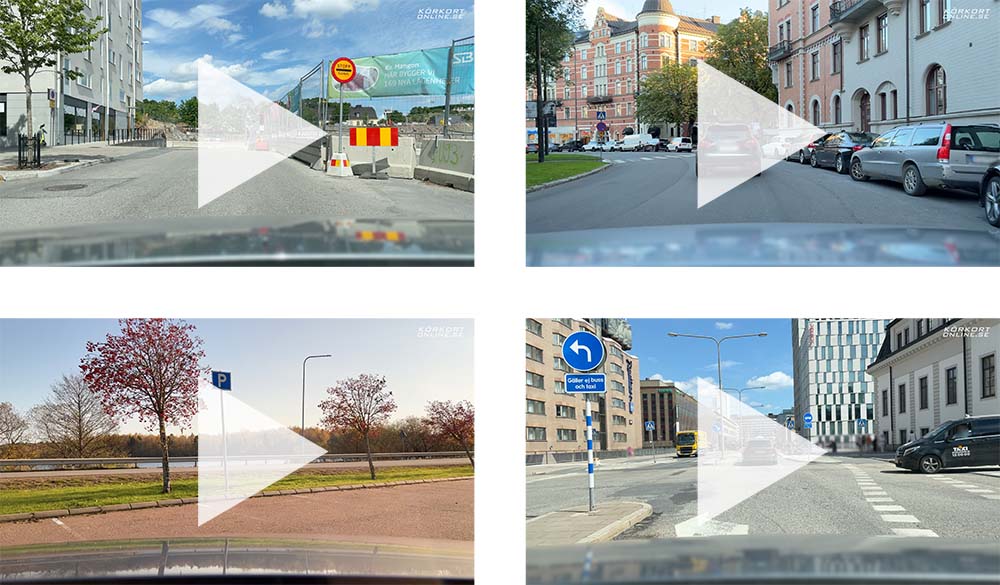Eco-driving – environmentally friendly and economical driving
Avoid first gear
First gear is appropriate when starting. First gear gives the car a lot of power. However, the downside of this is that a lot of petrol is used.
For this reason, it is best to shift to a higher gear as soon as you can. Normally after a few metres.
Drive in as high a gear as possible
High gear means a high number (5th = high, 1st = low).
Most modern cars can handle 50 km/h in 5th gear. However, if you notice the car getting sluggish or the engine starting to cough, you should shift to a lower gear.

Keep the engine under 2,500 rpm.
Also note that, in older cars that do not have fuel injection systems, carburettors may get clogged with soot if you drive in too high a gear.
Accelerate fairly quickly
A car driving constantly at the same speed consumes less fuel than an accelerating car. For this reason, it is best to get up to the desired speed as quickly as it is safe to do so, and not prolong the acceleration phase. But remember to keep the engine below 2,500 rpm.
Avoid the clutch
Only use the clutch when you have to, i.e. when shifting gears. The engine uses fuel when the clutch pedal is depressed.
Skip gears
You gain momentum more quickly and avoid too much clutch work. Examples of gear skips:
- 2nd ⇒ 4th
- 3rd ⇒ 5th
Utilise engine braking
A car that is using engine braking consumes no fuel. The actual brake effect is produced by the friction inside the engine.
How to brake using the engine
Engine braking involves completely releasing the accelerator pedal. Keep an eye on the tachometer and shift to a lower gear just before it reaches 1,200–1,300 rpm. If the rpm level falls below this amount, the engine will start to consume fuel again.
Avoid braking and stopping
Minimal fuel consumption is achieved by driving along at a constant speed. Every time you brake, you waste the energy that you used in order to build up your speed.
When you see a red light ahead, you can engine brake and keep moving slowly forwards (without stopping) and hope that it will turn green. The worst thing you can do is to approach at a high speed, brake hard to come to a stop just before the red light, and then accelerate to your original speed again after having been stationary.
Clarification regarding eco-driving
Traffic safety is always a higher priority than eco-driving. If you need to brake hard in order to avoid hitting a pedestrian, you should never worry about engine braking in order to be environmentally friendly – just step on the brake!
How important is eco-driving during the driving test?
– The most important thing is that you use eco-driving when it is appropriate.
Latest forum posts
- << Environment
- Eco-driving ↑↑
- Fuels >>


